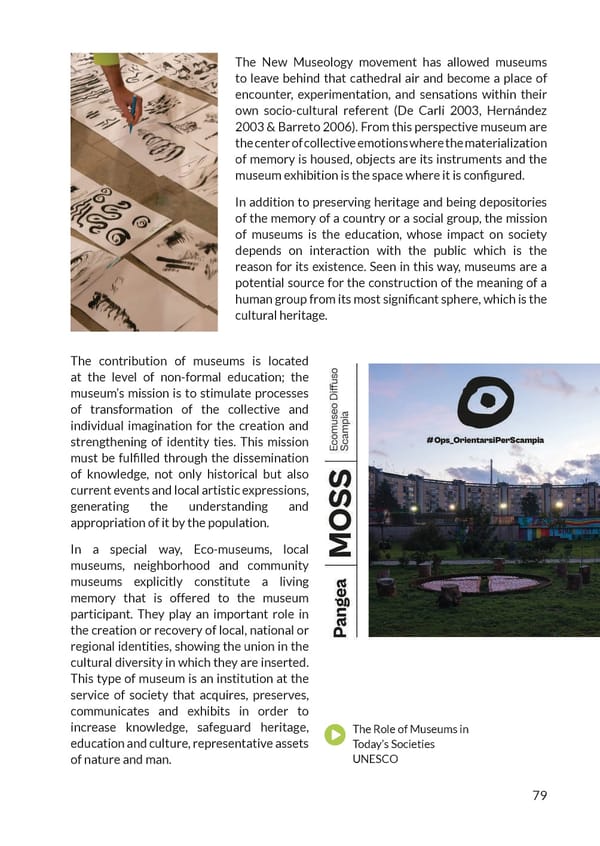The New Museology movement has allowed museums to leave behind that cathedral air and become a place of encounter, experimentation, and sensations within their own socio-cultural referent (De Carli 2003, Hernández 2003 & Barreto 2006). From this perspective museum are the center of collective emotions where the materialization of memory is housed, objects are its instruments and the museum exhibition is the space where it is configured. In addition to preserving heritage and being depositories of the memory of a country or a social group, the mission of museums is the education, whose impact on society depends on interaction with the public which is the reason for its existence. Seen in this way, museums are a potential source for the construction of the meaning of a human group from its most significant sphere, which is the cultural heritage. The contribution of museums is located at the level of non-formal education; the museum’s mission is to stimulate processes of transformation of the collective and individual imagination for the creation and strengthening of identity ties. This mission must be fulfilled through the dissemination of knowledge, not only historical but also current events and local artistic expressions, generating the understanding and appropriation of it by the population. In a special way, Eco-museums, local museums, neighborhood and community museums explicitly constitute a living memory that is offered to the museum participant. They play an important role in the creation or recovery of local, national or regional identities, showing the union in the cultural diversity in which they are inserted. This type of museum is an institution at the service of society that acquires, preserves, communicates and exhibits in order to increase knowledge, safeguard heritage, The Role of Museums in education and culture, representative assets Today’s Societies of nature and man. UNESCO 79
 MemoryHandbook new Page 78 Page 80
MemoryHandbook new Page 78 Page 80